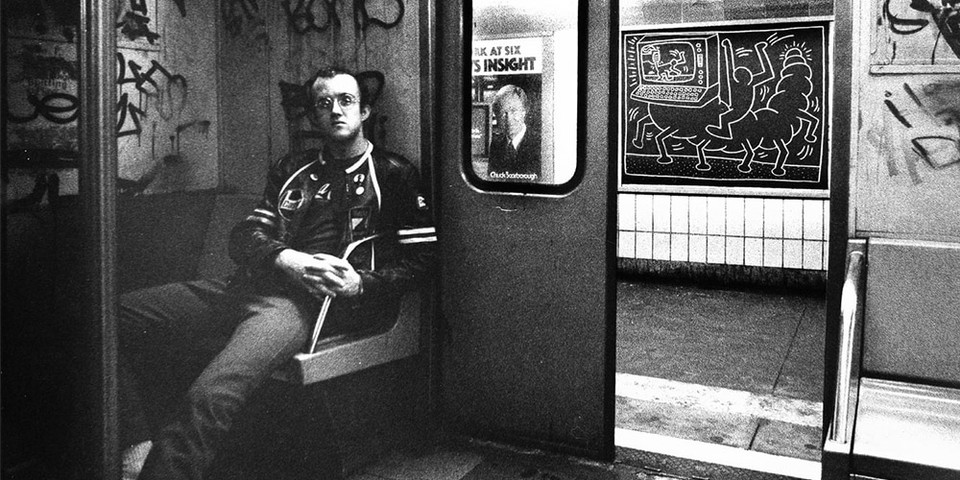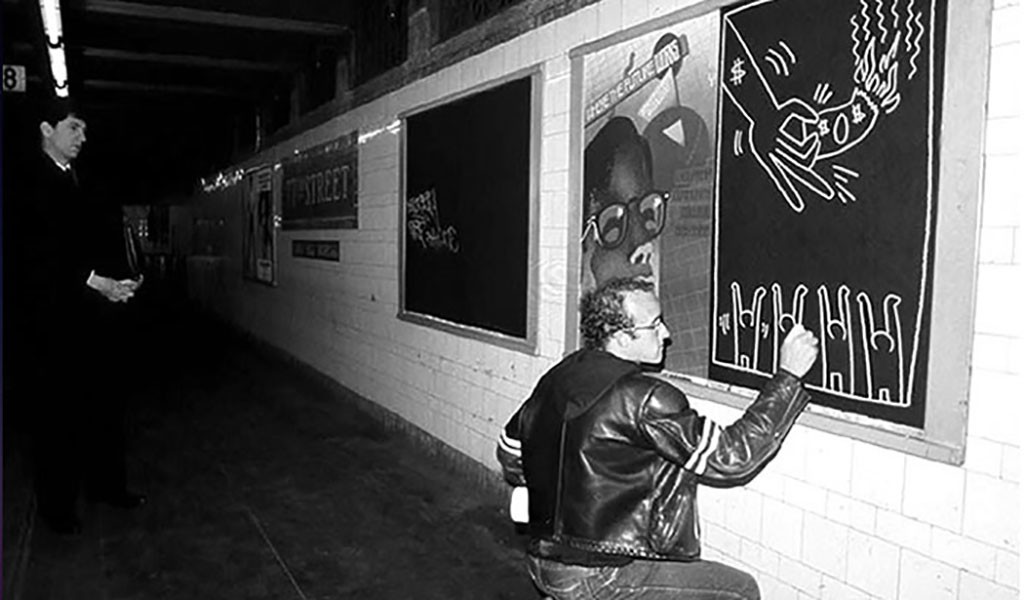“In 1981 I did a lot of drawings on the subway and every time there was someone who asked me why I did it or if I was paid to do it, or asked if it was an advertisement. Well, I felt that I should have given them an explanation but maybe it was not a good idea. Then I had a shock: why not give them a pin? I wouldn’t have said anything, I would have just given him the pin. I commissioned a thousand of them from a company with the black child on a white background; then others with the dog barking on a red background. Every time I went down the subway, I would carry handfuls of them and distribute them. People started wearing them and having a pin of mine started to be considered cool. Then, the people who wore it also started talking to each other. I suddenly understood what the power of a pin could be! ” – Keith Haring, 1981
Keith Haring was barely a boy when he moved to New York in the 1980s to study at the School of Visual Arts. It was in those years that, fascinated by the calligraphy and the spontaneous expressive power of graffiti seen on the subway, he had the idea of using the empty advertising spaces of the New York subway as a “blackboard” for his drawings. He buys some chalk and runs to draw on the train platforms of all the stations. His is an automatic and rapid drawing, a small performance that takes place under the eyes of all in the blink of an eye. You turn around for a moment and Keith Haring is gone.

In five years, the drawings of the subway become a daily, repetitive, almost obsessive ritual for Keith. In a 1990 interview in Arts Magazine, Haring explains: “it was a continuous line, a very strong line graphically, and subject to a time limit. I had to work as fast as possible. Without being able to correct anything. I actually couldn’t afford to be wrong. I had to be careful not to get caught ”. His drawings are everywhere and extremely recognizable, jumping from one train to another, his visual vocabulary matures and evolves, giving life to the imagery of characters and traits that have made him famous all over the world. The figures had to be increasingly simplified to be completed in the shortest possible time so as to avoid being identified by the local police and arrested.
It is here, underground, that the symbols of the dog and the “radiant” child are born. Similar to cartoons, these figures are immediate and impactful, and carry with them various layers of meaning. These works have become so iconic because they symbolize both a very important and decisive phase in the artist’s career, and because they symbolize also a revolutionary transition for Street Art in general, which will inspire with the principles of performance, speed, gesture, freedom and recognition many generations of artists.

